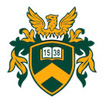Novák Ádám (szerk.): Fontes Memoriae Hungariae III. Varsóban őrzött magyar vonatkozású oklevelek, 1439–1489. Közreadja: Novák Ádám, Tóth Orsolya és Tóth Péter (Debrecen, 2019)
Sobiesław Szybkowski: Polish-Hungarian Relations between 1437 and 1490. A Short Introduction
XVII with the Regent, George of Poděbrad.56 In 1458, John Jiskra of Brandýs served as a mediator in the conflict between Poland and the Teutonic Order. Jiskra controlled Upper Hungary after the civil war which lasted from 1440 to 1442. However, his mediation attempts were in vain. Jiskra also suggested that Casimir Jagiellon should compete with the recently crowned Matthias Corvinus for the Hungarian throne. The Polish monarch declined this offer on the grounds that he was too preoccupied with the war in Prussia.57 However, we know that he did make his claim to the Kingdom of Hungary. 58 It seems that from the second half of the 1440s to the 1460s the only area of rivalry between Poland and Hungary was Moldavia, which Poland considered to be its fiefdom. This country also faced the risk of Ottoman expansion. Both John Hunyadi and then his son only supported those pretenders to the Moldavian throne who were willing to accept Hungarian supremacy, as this was part of their anti-Turkish policy. The Poles went in a different direction and supported their own protégés. Governor Hunyadi supported hospodar Peter II, who in 1448 gave him control over Kilia, a port on the Black Sea. In 1457, after Hunyadi’s death, power in Moldavia was taken by Stephen the Great, the son of the pro-Hungarian ruler Bogdan II. In 1462 Stephen tried to win Kilia back from Hungarians, but to no avail. Three years later he managed to take over the port with the approval of Casimir Jagiellon, but he had already removed a group of Wallachians from it who were allied with the Turks. The fact that Stephen developed closer relations with Poland was met with a strong reaction from Matthias. In autumn 1467, he invaded Moldavia, trying to re-establish Hungarian supremacy over this land. However, his attempts were unsuccessful. The army of Corvinus was defeated by Stephen the Great at Baia. The victorious hospodar sent Hungarian banners captured in the battle to Casimir Jagiellon, which was a significant message. 59 The events which took place in Moldavia in 1467 were a prelude to a much more serious conflict between the Polish Jagiellons and Matthias Corvinus. It was caused by the fact that the Jagiellons had dynastic rights to both Hungary ruled by Matthias and to Bohemia, whose internal situation was getting complicated. The power of George of Poděbrad, the Hussite king, was clearly weakening. 56 Biskup, 1967. 103., 109–110., 224., 226–230., 297., 301–302., 318., 328–331. 57 Długosz, Lib. XII/1. Ed. Baczkowski, Krzysztof et al. Varsoviae, 2003. 302–304.; Biskup, 1967. 522–523., 528–529., 536–537., 539., 542., 546–547.; Kalous, 2009. 58–59. 58 Mátyás király levelei . Vol. 1. Ed. Fraknói, Vilmos. Budapest, 1893. Nr. 3.; Kalous, 2009. 58. 59 Długosz, Lib. XII/2. Ed. Baczkowski, Krzysztof et al. Varsoviae, 2005. 202–205.; Czamańska, 1996. 104–130.; Kalous, 2009. 117–120.; Simon, Alexandru: The Ottoman-Hungarian Crisis of 1484. In: Matthias and his Legacy . Ed. Bárány, Attila, Györkös, Attila. Debrecen, 2009. ( Speculum Historiae Debreceniense 1.) (further: Matthias and his Legacy ) 419.
